Venkata Devesh Reddy Seethi
Effective Defect Detection Using Instance Segmentation for NDI
Jan 24, 2025Abstract:Ultrasonic testing is a common Non-Destructive Inspection (NDI) method used in aerospace manufacturing. However, the complexity and size of the ultrasonic scans make it challenging to identify defects through visual inspection or machine learning models. Using computer vision techniques to identify defects from ultrasonic scans is an evolving research area. In this study, we used instance segmentation to identify the presence of defects in the ultrasonic scan images of composite panels that are representative of real components manufactured in aerospace. We used two models based on Mask-RCNN (Detectron 2) and YOLO 11 respectively. Additionally, we implemented a simple statistical pre-processing technique that reduces the burden of requiring custom-tailored pre-processing techniques. Our study demonstrates the feasibility and effectiveness of using instance segmentation in the NDI pipeline by significantly reducing data pre-processing time, inspection time, and overall costs.
CovidAlert -- A Wristwatch-based System to Alert Users from Face Touching
Nov 30, 2021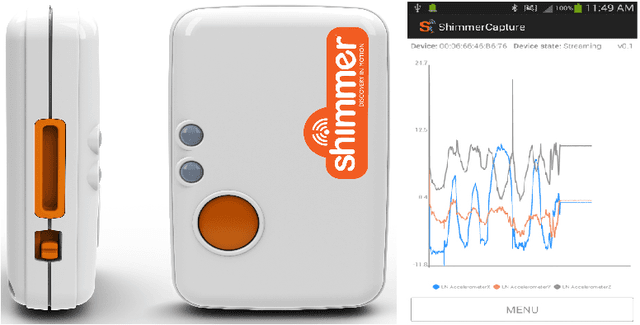

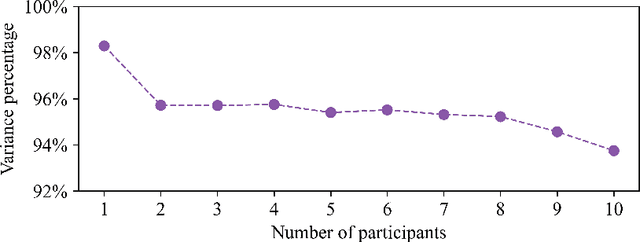
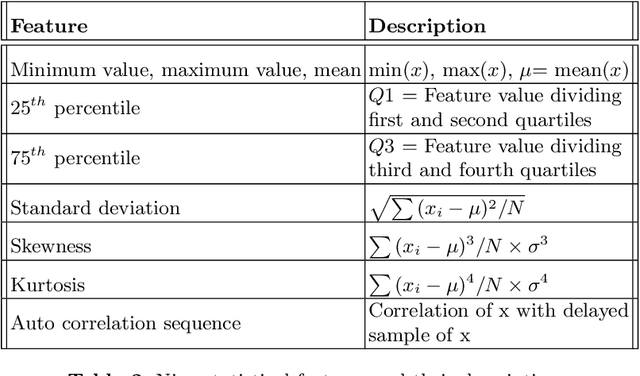
Abstract:Worldwide 2019 million people have been infected and 4.5 million have lost their lives in the ongoing Covid-19 pandemic. Until vaccines became widely available, precautions and safety measures like wearing masks, physical distancing, avoiding face touching were some of the primary means to curb the spread of virus. Face touching is a compulsive human begavior that can not be prevented without making a continuous consious effort, even then it is inevitable. To address this problem, we have designed a smartwatch-based solution, CovidAlert, that leverages Random Forest algorithm trained on accelerometer and gyroscope data from the smartwatch to detects hand transition to face and sends a quick haptic alert to the users. CovidALert is highly energy efficient as it employs STA/LTA algorithm as a gatekeeper to curtail the usage of Random Forest model on the watch when user is inactive. The overall accuracy of our system is 88.4% with low false negatives and false positives. We also demonstrated the system viability by implementing it on a commercial Fossil Gen 5 smartwatch.
An Explainable-AI approach for Diagnosis of COVID-19 using MALDI-ToF Mass Spectrometry
Sep 28, 2021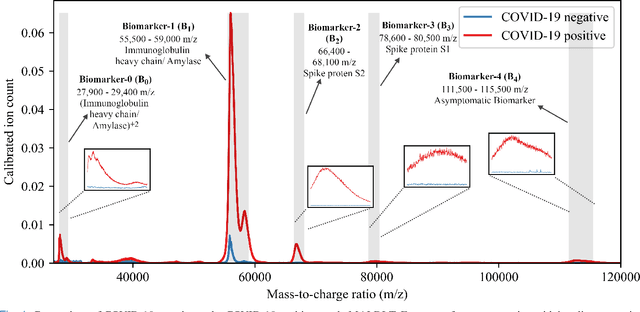
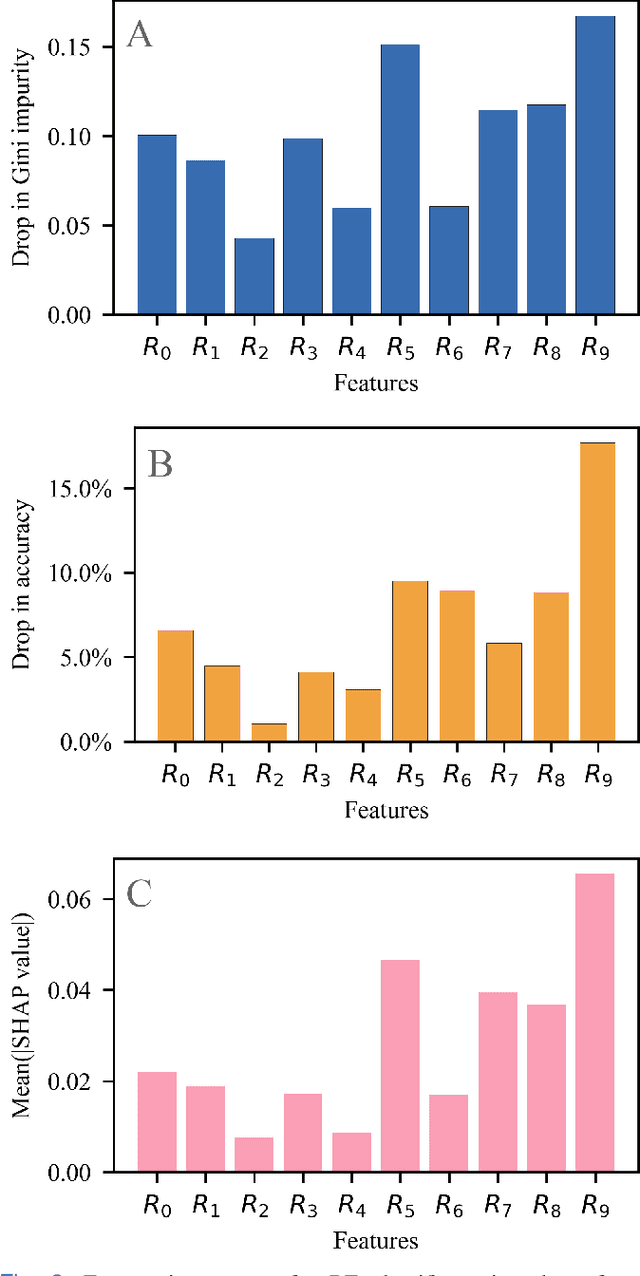
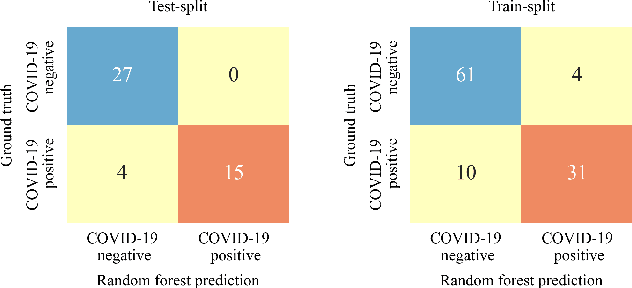

Abstract:The novel severe acute respiratory syndrome coronavirus type-2 (SARS-CoV-2) caused a global pandemic that has taken more than 4.5 million lives and severely affected the global economy. To curb the spread of the virus, an accurate, cost-effective, and quick testing for large populations is exceedingly important in order to identify, isolate, and treat infected people. Current testing methods commonly use PCR (Polymerase Chain Reaction) based equipment that have limitations on throughput, cost-effectiveness, and simplicity of procedure which creates a compelling need for developing additional coronavirus disease-2019 (COVID-19) testing mechanisms, that are highly sensitive, rapid, trustworthy, and convenient to use by the public. We propose a COVID-19 testing method using artificial intelligence (AI) techniques on MALDI-ToF (matrix-assisted laser desorption/ionization time-of-flight) data extracted from 152 human gargle samples (60 COVID-19 positive tests and 92 COVID-19 negative tests). Our AI-based approach leverages explainable-AI (X-AI) methods to explain the decision rules behind the predictive algorithm both on a local (per-sample) and global (all-samples) basis to make the AI model more trustworthy. Finally, we evaluated our proposed method using a 70%-30% train-test-split strategy and achieved a training accuracy of 86.79% and a testing accuracy of 91.30%.
CNN-based Speed Detection Algorithm for Walking and Running using Wrist-worn Wearable Sensors
Jun 03, 2020Abstract:In recent years, there have been a surge in ubiquitous technologies such as smartwatches and fitness trackers that can track the human physical activities effortlessly. These devices have enabled common citizens to track their physical fitness and encourage them to lead a healthy lifestyle. Among various exercises, walking and running are the most common ones people do in everyday life, either through commute, exercise, or doing household chores. If done at the right intensity, walking and running are sufficient enough to help individual reach the fitness and weight-loss goals. Therefore, it is important to measure walking/ running speed to estimate the burned calories along with preventing them from the risk of soreness, injury, and burnout. Existing wearable technologies use GPS sensor to measure the speed which is highly energy inefficient and does not work well indoors. In this paper, we design, implement and evaluate a convolutional neural network based algorithm that leverages accelerometer and gyroscope sensory data from the wrist-worn device to detect the speed with high precision. Data from $15$ participants were collected while they were walking/running at different speeds on a treadmill. Our speed detection algorithm achieved $4.2\%$ and $9.8\%$ MAPE (Mean Absolute Error Percentage) value using $70-15-15$ train-test-evaluation split and leave-one-out cross-validation evaluation strategy respectively.
 Add to Chrome
Add to Chrome Add to Firefox
Add to Firefox Add to Edge
Add to Edge